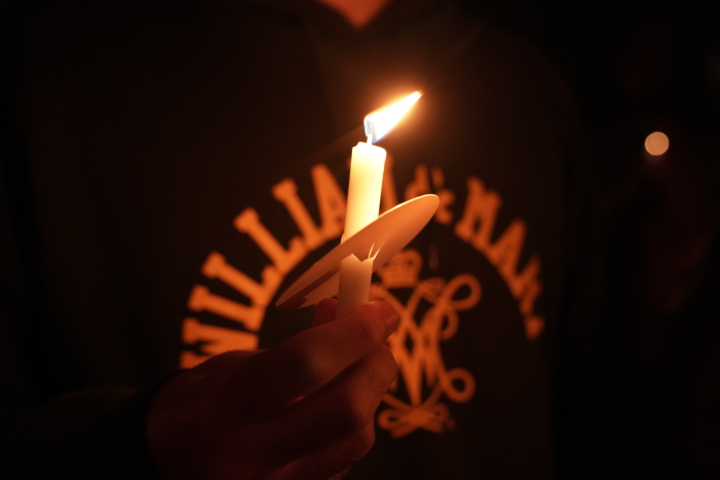Thomas Alexander recently came to William & Mary as the university’s deputy chief diversity officer. He has worked in higher education with a focus in diversity, equity, inclusion and belonging for over 20 years at institutions ranging from highly selective liberal arts schools to historically Black colleges and universities (HBCUs) to regional and national research institutions.
Before coming to W&M, Alexander was the director for the Center for Justice and Liberation at Salem State University in Massachusetts.
W&M News recently talked with Alexander about his work in diversity, equity and inclusion (DEI) in higher education and how universities might foster those efforts, even in times of seemingly increased divides.
Q: What drew you to this career field overall and, most recently, to W&M?
A: I have worked in higher education my entire career with a particular focus on diversity, equity and inclusion. My interest in this area is derived from my own origin story. I grew up in Birmingham, Alabama, which for many is considered the cradle of the Civil Rights movement. My activist parents made sure that I had a firm understanding of my identity as an African American. As I navigated through my college experience, my involvement and advocacy in various student organizations and programs led to a desire to work in higher education.
One of my first professional experiences was at the University of Florida in multicultural affairs, and then within the College of Education. Those experiences solidified my foundation in DEI. As the multicultural affairs dean, I worked with all undergraduate, graduate and professional students, developed opportunities for social connections and served as an advocate as well as a conduit for resources.
The work that was already being done at William & Mary, its academic reputation and the overall responsibilities of the position are what initially drew me to my current role.
Q: In your previous position, you led a variety of initiatives that were meant to foster inclusivity and belonging on your campus. Belonging is also among W&M’s core values. From your experience, how can W&M and other universities create more inclusive communities?
A: It’s important to recognize that students, faculty, staff and community members with marginalized identities encounter the W&M campus in a myriad of ways. Their perspectives may differ in a variety of circumstances and instances. What is normal to one person might be considered a barrier for others. For instance, when planning events and activities, consider all who might be impacted during the planning process. Religious observances, dietary restrictions, the method of publicizing, the accessibility of the venue, the inclusion of gender neutral language and the cost to attend are just a few examples of things to consider when creating a more inclusive and welcoming environment.
Q: With political and other divisions within the country and around the world, many may shy away from discussions involving potentially contentious topics. How can universities foster healthy dialogue around such topics? Can a sense of belonging still be created when there are significant disagreements?
A: What has worked for me in the past is developing programs that allow people to hear what others think and believe in a non-threatening environment. Within this concept, questions like, “Can you like a song with degrading lyrics without condoning its message?” or “Should religion (or the lack thereof) matter in a relationship?” would be asked. A person would have the opportunity to share their opinion, uninterrupted, to the group. It then goes to the next person. After it goes around the table or room once, the facilitator synthesizes the comments/themes, and asks the question again. More often than not after hearing what someone else has said, a significant number of the opinions change.
You see, many people often hang out with or are friends with those that have similar thoughts and opinions. Hearing a different perspective from someone that they are simply tasked with listening to aids in the understanding different viewpoints.
Q: From your experience, have you been surprised by what kind of efforts seem to be effective — or not effective — in creating real change? Among those you have seen to be most effective, do you hope to introduce any to W&M?
A: Through the various institutions that I’ve worked, I learned early on that every campus population is different. Therefore, the effectiveness of DEI initiatives are more about learning about the culture that exists at that institution. As far as W&M, I’ve learned a lot in the short time that I’ve been here, but would need to learn more before introducing a specific effort to the campus community.
Q: Why is this work so important, especially in a university setting? And why should everyone care about it?
A: College is a place where the majority of traditional age students are developing into their adult selves. It is our hope that having a deep understanding of diversity, equity and inclusion will allow them to be better learners, better alumni and better human beings. For faculty and staff, working in an environment that is welcoming and affirming to one’s identity builds morale and aids in the retention efforts of the institution.
Q: I imagine that this work may get difficult at times. What encourages you to keep at it? And what encouragement would you give others to continue the pursuit of greater diversity, equity and inclusion on college campuses?
A: You’re right. It definitely can feel as if you’re pushing a rock up a mountain. The encouragement comes when you recognize that you have others that are willing and able to help push. Culture change is not easy. Folks that are doing the work need to stop and practice self care and reach out to others that are partners in the work for support.
Staff, University News & Media






